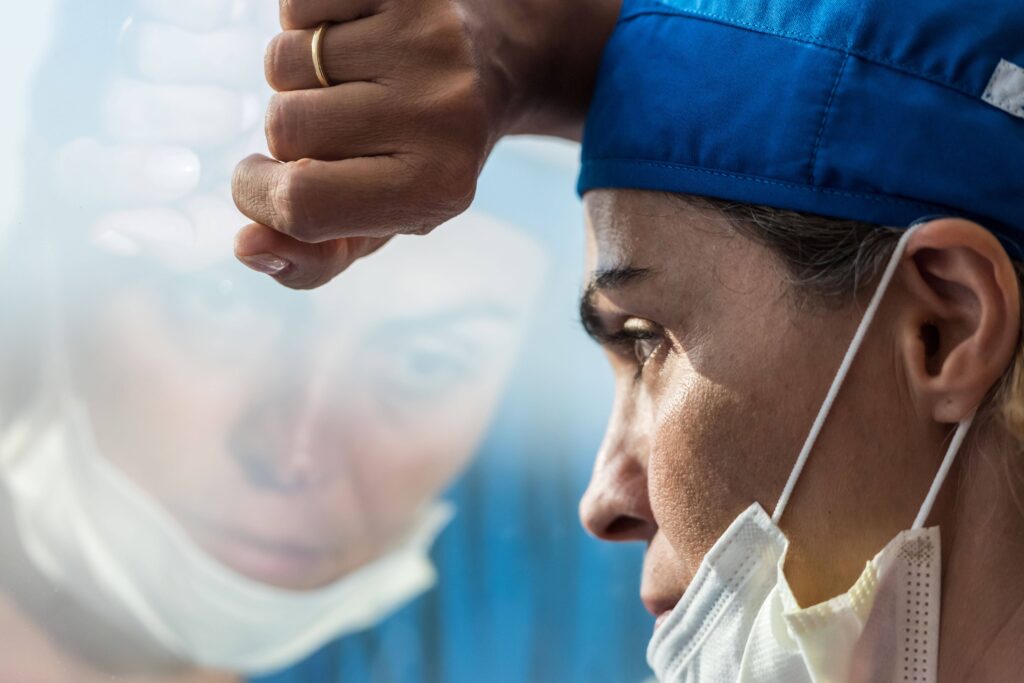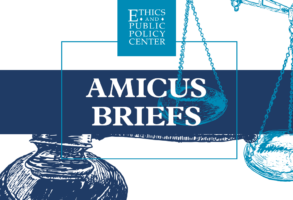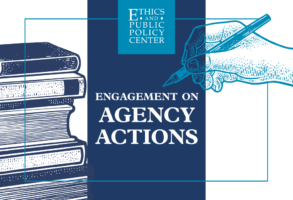
Published January 1, 2024
In the early 19th century, J. Marion Sims, a graduate of South Carolina College and future prodigious surgeon, returned home to his family and announced that he was going to become a physician. His father replied: “If I had known this, I certainly should not have sent you to college.” He went on: “It is a profession for which I have the utmost contempt. There is no science in it. There is no honor to be achieved in it; no reputation to be made.”
Hyperbole aside, Sims’s father recognized the lowly nature of the physician’s craft in the early 1800s. At the time, medicine was replete with fraudsters and hucksters, few proven medications existed for doctors to offer ill patients, becoming a physician required little education, and physicians often had to double as pharmacists or midwives to pay the bills.
The elder Sims’s judgment perplexes us now. Today, medicine is one of the highest paying professions in the United States. Countless treatments for diseases lie at doctors’ fingertips. The path to becoming a physician requires discipline and scientific rigor, and lasts nearly a decade or more after college. And we tend to think very highly of our physicians — in a Pew Research Center poll from a few years ago, 74% of Americans had a mostly positive view of them. While burgeoning health-care costs admittedly leave policymakers and citizens frustrated, rarely are doctors the focus of their ire.
Alas, underneath its lustrous veneer, in the back offices of hospitals and clinics, and by the anemic light of exam rooms, something is rotten in the state of medicine. In a recent survey, more than 20% of physicians and 40% of nurses reported plans to exit their practices within the next two years. One questionnaire showed that only three in 10 physicians would recommend their profession as a career. In 2015, a study found that 29% of physicians-in-training suffer from clinical depression — nearly double the rate of the general population. Among physicians, one in 10 have thought about or attempted suicide.
Many refer to this disaffection as “burnout.” German-American psychologist Herbert Freudenberger first used the term in its modern context in the 1970s to describe professional exhaustion. Psychologists Christina Maslach and Michael Leiter later defined burnout as “crushing exhaustion, feelings of cynicism and alienation, and a sense of ineffectiveness.” Studies suggest that nearly half of U.S. physicians experience such symptoms.
Physician burnout is not only widespread; it leads to widespread harms. Burnout is positively associated with cardiovascular disease, alcohol use, depression, motor-vehicle accidents, suicide, and shorter life expectancy. Patients suffer from physician burnout as well. Burnout leads to worsened executive function, attention, and communication — three cognitive abilities that are vital to caring for patients. Burnt-out physicians themselves report a greater likelihood of providing suboptimal patient care and making errors than those without such symptoms.
Physician burnout also infects the American health-care system as a whole. As it stands, we face a doctor shortage, and researchers project a further paucity of physicians over the next decade. Burnt-out physicians are more likely to cut back on time at work, leave their practice, or exit the profession, thereby exacerbating the problem. Such scarcity is expensive: A research group led by Shasha Han found that physician turnover and reduced clinical hours stemming from burnout cost approximately $4.6 billion each year.
Disconcertingly, the prevalence of physician burnout is rising. A 2022 study noted that burnout rates among U.S. physicians rose dramatically between 2020 and 2021, with the proportion of physicians experiencing at least one burnout symptom nearly doubling. In light of these and other statistics, the U.S. surgeon general, Dr. Vivek Murthy, has called physician burnout and its resultant effects a “long-standing crisis.”
This disillusionment with medicine differs significantly from the specter of scientific ignorance that J. Marion Sims faced in the 19th century. Our current predicament is existential. We must identify the causes of physician burnout and attenuate them before medicine loses its honor, its reputation, and its soul.
CAUSES AND CONSEQUENCES
How did this happen? How has a profession suffused with meaning and purpose left its practitioners weary and dejected?
A survey of physicians from early 2023 tells part of the story. The respondents pointed to excessive bureaucratic tasks — which include paperwork and medical documentation — as the primary source of burnout. And in fact, a recent study published in the Journal of the American Medical Association noted that physicians who use electronic health records (EHR) spend a mean of 1.8 hours daily completing documentation outside of their regular office hours — time for which they are not compensated. Nevertheless, it is work doctors must do in order to be compensated for seeing patients. Remarkably, physicians spend more than twice as much time on tasks like entering information into the EHR system as they do on attending to patients.
Mandated Health Insurance Portability and Accountability Act, fire safety, security, wellness, sleep, research, billing, and other online courses take up dozens of additional hours of physicians’ time. Some of them must be completed annually to boot. And the number of required courses continues to grow. The Drug Enforcement Administration just instituted a new requirement: Physicians must complete eight hours of training on the treatment and management of patients with opioid disorders. Even physicians who rarely, if ever, prescribe opiates must take this course.
For my own part, I have spent countless hours of work and leisure time logging in to various websites, paying online-course fees, reading through opaque forms, listening to mandated video lectures, and taking multiple-choice quizzes to satisfy these kinds of requirements. And I have no choice: Hospitals threaten to suspend, and state medical boards and the federal government vow to withhold licensure from, doctors who don’t complete the required courses.
A related problem that distracts physicians from caring for patients is administrative bloat and complexity. Today, for every working physician, there are approximately 10 administrators. The overwhelming number of non-medical workers employed by hospitals, combined with multi-layered administration, adds substantial expenses to the system: Such costs alone make up a quarter to a third of health-care spending in the United States. Disturbingly, about half of this spending does not change health outcomes in any meaningful way.
Lack of respect from staff and patients was another cause of burnout reported in the survey. Between 2011 and 2018, there was a 67% increase in violence — including physical abuse, verbal abuse, and sexual harassment — against those working in the field of medicine. This trend only worsened throughout the Covid-19 pandemic.
I suspect such mistreatment stems from another commonly reported burnout source: lack of physician autonomy. Dr. Peter Yellowlees, professor of psychiatry and chief wellness officer at the University of California, Davis, observes that increasing numbers of physicians are employed by health systems, while fewer are in private practice. Large health systems tend to urge doctors, whether explicitly or implicitly, to treat patients as consumers. In such systems, patients order the services desired during their visits, and their doctors are expected to oblige regardless of whether such testing is necessary, or even potentially harmful. Physician pay is often tied in part to patient-satisfaction scores, which hold physicians captive to the caprices of “clients” rather than the health of patients.
A system that prioritizes patient satisfaction curbs practitioner autonomy and leaves patients without a sagacious guide. Patient satisfaction is also a poor way of evaluating physicians’ work. In 2013, researchers at Johns Hopkins University found little evidence that patient satisfaction corresponds to the quality of surgical care — a finding backed up by more recent literature suggesting the same for medical care more generally. The preceding year, physicians at UC Davis found that increased patient-satisfaction scores were associated with higher health-care expenditures. They also reported a positive association between such scores and patient mortality.
Perhaps the most startling complaint of the doctors surveyed is that of “too many work hours” and not enough pay. This is particularly perplexing because the average physician today works only about 50 hours per week, while the average adult works closer to 45 hours per week. Yet across all age groups, nearly half of physicians said they would prefer to work fewer hours.
What could be prompting this response? Technology may be partly to blame. Thanks to the wonders of the internet, patients can send emails to physicians through the EHR system at any time of the day, forcing physicians to check for and respond to messages both during and outside of work. One study found that primary-care physicians spend an hour a day replying to these messages, which cover a range of issues. Some of these messages require physician responses, while others can be handled by nursing or secretarial staff. Though patients understandably want to send questions about their health to physicians, the EHR system keeps physicians attached to the computer to an unhealthy degree.
Another part of the problem may stem from something much deeper. Any meaningful job with a clear purpose requires an investment of time and hard work, particularly if one wants to do it well. But if the system stymies one’s purpose, 50 hours can feel excessive even if the compensation is ample and the hours manageable relative to those of other high achieving fields.
Research bolsters this theory. A group of investigators studied the question of what drives the risk of physician burnout, and found that faculty physicians who spent less than 20% of their time (one day per week) on the activity that was most meaningful to them had higher rates of burnout. There was a threshold effect here, too: Once the physicians spent at least 20% of their time on their most meaningful activity, burnout rates hit a floor. This means that increasing physicians’ 50-hour week to 60 or 70 hours wouldn’t necessarily increase burnout rates if the added time was purposeful. By the same token, some doctors are cutting their hours in an attempt to alleviate their burnout, which may prove an insufficient remedy if the remaining hours consist primarily of administrative tasks.
This conundrum of compensation and work hours is tied directly to a lack of physician autonomy. As Dr. Yellowlees observes:
[If doctors who practice independently] want to earn a greater salary, they can adjust their work hours or style to do so. These options are less available to employed physicians, who are often working many more hours than they are paid for but with no financial reward. Hence, their only option is to ask for a raise to at least make them feel more respected and valued, and less “used.”
This financial recognition, he continues, becomes not just a signal of physicians’ monetary worth, but “a sign of value and respect from their employer.” Given the amount of time physicians spend on tasks for which they are not compensated, it’s no wonder so many physicians feel cheated and undervalued.
FALSE CURES
Thus far, a variety of solutions to these problems have been proposed, but few have proven effective.
In response to pervasive burnout, hospitals often host wellness programs. Administrators adopt monikers like “Office for Well-Being” and “Physician Wellness Committee.” They discuss strategies to mitigate burnout, increase resiliency, and identify colleagues in distress. They provide doctors with lockers and kitchens, and hire personal trainers to help them get into shape. Most tout their goal of supporting “our faculty and staff in their workplace wellness and beyond.” Even professional medical societies have waded in: The American Academy of Neurology recently created a wellness program with tools and resources for residency-program wellness.
While no doubt well intended, workplace wellness programs lack robust evidence to support their efficacy. They also cost money and consume the time of doctors required to participate in them. Such broad-brush initiatives can offer only generic encouragement and anodyne interventions while leaving unaddressed the underlying causes of burnout, which are not behavioral or lifestyle oriented. They may actually contribute to burnout itself by further distracting doctors from their work.
Even more serious attempts at reform fall short. Take, for instance, the Mayo Clinic’s Strategies to Reduce Burnout by Drs. Stephen Swensen and Tait Shanafelt. The authors, two physicians and accomplished researchers, cover the problem of physician burnout extensively. However, their remedies sometimes seem excessively focused on bureaucratic approaches. For example, they include a “Critical Success Factors Worksheet” — a scale to assess the success factors that reduce burnout. One of the factors they list is appointing “operational leadership oversight.” A chief wellness officer, vice president, or associate dean, they suggest, could oversee hospital wellness initiatives and help create goals and targets, quantify improvement, develop communication and management plans, and “celebrate and acknowledge progress toward goals.”
No doubt leadership matters a great deal in taking the initiative to reduce burnout. However, according to the authors themselves, “administrative complexity” is one of the major obstacles to burnout reduction. Perhaps we need less administration rather than more.
Government health-care officials similarly come up short in their attempts to solve this problem. In August 2022, the surgeon general offered his solutions in an essay for the New England Journal of Medicine. To be sure, many of his recommendations would help address the crisis he identifies — among other things, he suggests that the medical system reduce the administrative burdens that “stand between health workers and their patients and communities.” He also sets a goal of reducing clinicians’ documentation burden by 75% by 2025.
Nevertheless, some of his proposals distract from the problem. Dr. Murthy calls on hospitals to offer physicians living wages, health insurance, sick leave, and access to mental-health services. Undoubtedly any employee in any field seeks such benefits when choosing a job. But this solution merely addresses a question about what private or public employers ought to provide their employees. While doctors may feel that they are undercompensated, they still earn a living wage. Few, if any, attribute their burnout to a lack of paid sick leave. And though the long and arduous days of a physician can be hard on mental health, initiatives directed at this issue merely aim to ameliorate the symptoms of burnout, not its causes.
Other proposals may end up amplifying rather than solving the burnout problem. Following the prescriptions of the current political winds, Dr. Murthy advocates advancing equity and addressing housing, food insecurity, and other social determinants of health. He asserts that these efforts would help mitigate burnout.
Certainly we ought to think of ways to lift our fellow citizens out of poverty. But not every public-health-related policy question ought to be framed as a crisis tied to burnout. As the Ethics and Public Policy Center’s Dr. Aaron Kheriaty points out in his book The New Abnormal, we should not confuse questions about policy and public health with the vocation of the physician. Doctors qua doctors are not responsible for poverty, gun violence, racism, climate change, or social injustice. In the exam room, they owe their allegiance not to any political or social cause, but to the health of the patient in front of them.
What’s more, government might very well address these issues the same way it has addressed patient privacy, patient safety, workplace violence, and billing regulations, among others: through required online modules or lectures. These mandated programs might instruct doctors on issues like housing, food insecurity, or the importance of mental health. They’d likely consume time from the workday, or an evening at home with family. And they might further distract physicians from caring for patients, likely aggravating the burnout problem.
A DIAGNOSIS
The challenges and proposed solutions outlined above doubtless provide good reason for frustration and despondency about medicine. Given how disparate they are, they may even seem all the more challenging to address. But what ties them together is far more important than what separates them — and there is a clear theme here that is at least as old as the Bible.
In Exodus, after the Jews leave Egypt, the Bible recounts how Moses passed judgment on every squabble arising between the Israelites. His father-in-law, bearing witness to this frustrating and time-consuming task, observed: “You and these people who come to you will only wear yourselves out. The work is too heavy for you; you cannot handle it alone.” Taking this advice, Moses picked judges from the people of Israel to help resolve disputes. This allowed him to focus on the task of leading Israel — a vocation delegated to him by God.
Moses, who worked tirelessly to lead the Israelites out of Egypt, did not “burn out” while bringing God’s message to Pharaoh or parting the Red Sea. Yes, he protested; perhaps he wasn’t the right man for the task. But burnout endangered him only when he burdened himself with a particular kind of work: that which embroiled him in the minutiae of individual disputes within the tribe.
We ought, therefore, to resist the facile temptation to think of burnout as solely a consequence of excess work; it is an excess of work detached from our purpose that wears us down.
Let us define burnout, then, as exhaustion, cynicism, alienation, and ineffectiveness resulting from a loss of vocation — a loss of purpose and meaning in the work we do. And in fact, all the problems responsible for burnout obfuscate the physician’s purpose: They either distract from or actively impede physicians’ ability to practice medicine.
The purpose of medicine does not consist of filling out charts, dealing with insurance and government regulations, or staring at a computer. As Dr. Leon Kass, an American public intellectual and bioethicist, explained in a 1975 essay in The Public Interest, the end of the physician’s art is patient health. But what is health?
Health does not consist purely of happiness or the satisfaction of one’s desires. If a surgeon makes a patient’s legs longer so the patient can be a basketball player, the surgeon does not pursue the patient’s health; he merely fulfills the patient’s wishes. Nor does health consist of the health of the body politic. Addressing racism, violence, poverty, or climate change, worthy though these goals may be, concerns the doctor only insofar as the doctor, like any American, considers himself an upstanding citizen with a vested interest in society.
According to Kass, to be healthy means a person can do the kinds of activities a healthy human might be expected to do: sleep, eat food and derive nutrition from it, socialize, and flourish in general. This extends beyond curing disease to disease prevention. Indeed, a perfectly healthy person may go to the doctor for a vaccine or to obtain dietary recommendations. Our health necessitates this. Physicians, then, aim to either maintain a patient’s health, or to return a patient to his previous state of health. Since a flourishing human life requires health, this is no small matter. And while our health comes and goes and inevitably fades, we seek it with the aid of and in partnership with our physicians.
The physician possesses a wealth of knowledge about the functioning of the human body and what endangers it. The patient brings a surfeit of wisdom about his own life. The physician-patient relationship, then, exists in a complex and highly tenuous balance. It requires time, focus, trust, and consideration, and lasts beyond the patient’s clinic visit or hospital stay. Physicians spend a lifetime keeping up with new discoveries to help their patients. They mull over their diagnostic and treatment decisions in conferences with colleagues, during their commutes, and when they lie down to sleep. This vocation, if done well and pursued virtuously, is a calling.
Consider, then, how a physician’s purpose relates to physician complaints. Too many bureaucratic tasks and an overbearing obsession with computer documentation distract doctors from attending to the health of their patients. A lack of respect from staff diminishes the importance of the physician and his work. One recognizes this declension in the term hospitals often use to refer to physicians: “providers.” If physicians merely provide a service, they no longer participate fully in their own vocation. Ergo, they feel poorly compensated and look extrinsically rather than intrinsically for their reward.
We ought to think of medicine not as a job to tolerate, but as a profession, the mission of which is to heal patients and usher them toward health. Yet our doctors spend an inordinate amount of time on bureaucratic tasks and documentation because that is what government, insurance companies, and hospitals require them to do. Our system pits the occupation and its incentives against the physician-patient partnership. And as the doctor’s vocation increasingly transmogrifies into bureaucratic burdens, physicians more often want to separate their private lives from their professional ones even as they are frustratingly forced to overlap.
Doctors don’t necessarily need less work to assuage burnout; they need to do more of the vocational work that gives their profession meaning.
PATIENTS OR PROFITS?
Because burnout emerges from a loss of purpose, reform must focus on guiding the medical field toward restoring its purpose. And that depends not just on elevating the relationship between the physician and the patient above all, but on recommitting to a focus on patient health.
Much of our culture has lost sight of medicine’s purpose. This may be most obvious in the very institutions built to pursue that purpose: hospitals. Across the country, a distressing profit motive is driving hospitals to shunt money into new construction projects, which often include excessive amenities like large-screen TVs in each patient room, new cafeterias with organic foods, pricey art installments, and tablets or iPads at every bedside, all in the name of attracting more patients.
It’s not wrong to renovate out-of-date hospitals. But which, if any, of these renovations augment patient health, and which are simply expensive ways to impress “customers”?
Even non-profit hospitals, ostensibly established solely for the purpose of healing patients, now strategize and act in such a way as to emphasize the bottom line. The non-profit UC San Francisco, to take just one example, plans to construct a $4.3 billion hospital — a new facility funded through external financing, philanthropy, and hospital reserves. Not to be outdone, the UC Davis Medical Center started work on a new $3.8 billion tower, which will include a larger pharmacy, an imaging center, new operating rooms, and single-patient rooms.
To fund these costly renovations, hospitals concentrate their power through mergers and acquisitions, leading to monopolization of medicine. Health-care economists Zack Cooper and Martin Gaynor have found that about 80% of hospital markets in the United States are “highly concentrated” based on criteria established by the Federal Trade Commission and the Department of Justice. High concentration creates an anti-competitive marketplace, and where there is little competition, patients pay significantly more for treatment than they might have otherwise. At the same time, the quality of care they receive declines.
This modus operandi filters down to the way physicians approach patients. Hospitals now use relative-value units (RVUs) to measure how much money physicians make through patient visits. Many hospitals set RVU goals for physicians, who must meet those goals to be paid their salary. The more RVUs physicians make by treating patients, the more money the hospital makes. Thus, in most medical systems, physicians aren’t necessarily incentivized to make patients healthier — they are incentivized to see more patients, generate more RVUs, and make more money.
An example demonstrates how this approach corrodes the medical profession. In their book, If I Betray These Words, Drs. Wendy Dean and Simon Talbot tell of a pediatric-rehabilitation specialist, Dr. Jacob Neufeld, and his experience at St. Luke’s Hospital and Children’s Specialty Center in Boise, Idaho. To cut costs and increase revenue, hospital administrators shortened Dr. Neufeld’s appointments with patients and increased patient volume. If he was running over time with patients, assistants would tell him that his time with the patient had ended. When a colleague quit and he was the only specialist covering the hospital, the administration offered him a contract renewal with a 30% salary cut. Ultimately Dr. Neufeld, pressured by the system and devoid of a path out, took his own life.
A PRESCRIPTION
Between the obsession with profit and the burgeoning bureaucracy, our system combines the worst of capitalism with the worst of socialism — and it’s not even in service of patient health. The following suggestions provide a general sense of where we can make changes to address these problems, diminish physician burnout, and, ultimately, restore the integrity of the medical profession.
To begin, we ought to decrease what the system requires of physicians outside of caring for patients. Low-hanging fruit abounds. For example, not all of the mandated online modules that physicians must watch are necessary. We can eliminate redundant modules and, if any of them cannot be eliminated, we can require that they be completed just once.
As for documentation requirements that distract physicians from tending to their patients, hospitals could hire scribes to write as the physician speaks with the patient. Physicians already use scribes in select circumstances, and doing so tends to decrease the length of patients’ hospital stays. Expanding the circumstances in which scribes record patient information would be a simple fix for a major driver of physician burnout.
Additionally, about half the information doctors record in patient notes is copied from prior physician notes, and the rate of duplicate text requirements is increasing. Since this extraneous text often revolves around billing, insurance companies and the Centers for Medicare and Medicaid Services ought to minimize the required items in notes.
Technology diversions like the EHR system can be dealt with in a similar manner. Hospitals and practices ought to hire nurses who can filter messages such that physicians only hear about complex questions or test results. Like using scribes to relieve the doctor’s documentation burden, employing nurses to filter patient messages is done in some circumstances, but ought to be done more widely. For instance, physicians don’t need to receive messages asking for a note to excuse a patient from work; a nurse or secretary can write this note and have the physician sign it.
Excessive documentation requirements relate directly to the administrative morass that overwhelms the physician-patient relationship. Shrinking hospital administration will mean changing rules, shifting resources, and laying off staff. It will be painful and complicated. But it is possible, as well as necessary, to preserve medicine’s future.
The distressing profit motive that often stymies medical practice must also be addressed. True, the health-care system and health technology depend on revenue, and that will never cease being the case. Nevertheless, the purpose of non-profit medical institutions ought to align more closely with medicine’s telos. To that end, our policymakers should enforce rigid boundaries around non-profit behavior in the health-care system. This would push institutions to focus on medicine’s necessities rather than flashy accoutrements.
In addition to holding non-profit hospitals to account, the physician and the patient need to be made more aware of prices. While hospital systems have begun (gradually) to reveal prices, during a clinic visit, physicians and patients still rarely know what a test, procedure, or medication will cost the patient. This needs to change. If physicians are to help their patients pursue health, both parties must be privy to the pecuniary complexities of medical choices. Financial limitations will always exist, and physicians and patients need to face those limitations in partnership. Physicians can then suggest cheaper alternatives if a medication or test is too expensive.
While technology, bureaucracy, paperwork, and profiteering clearly distract from the purpose of medicine and fuel physician burnout, these obstacles are also linked to our cultural confusion about medicine’s end. The ultimate challenge of reform, then, is to convince our fellow citizens that the health of the patient drives the practice of medicine.
This must begin within the medical profession itself. Future physicians and nurses should be taught about the vocation of medicine and its telos in school. Physicians, in defense of their calling, must understand that they can say “no” to patients if interventions like physician-assisted suicide or cosmetic surgery do not further the patient’s health. And hospitals and medical schools should alter the language they use when referring to physicians — they should refer to them as such, not as “providers.”
Finally, physicians ought to resist taking an ideological stand in the exam room. As we saw earlier, this confuses the purpose of the physician with that of the citizen. In turn, it confuses patients, who visit doctors for healing rather than a lecture about their or their physician’s social causes. Patients must be able to trust that their physicians see them for only one purpose, regardless of their condition or political opinions.
MAKING MEDICINE WHOLE
In his prescient 1975 essay, Dr. Kass anticipated the burdensome troubles medicine would eventually face. Even then, he observed that medicine had lost its way. “Once the definition of health care and the standards of medical practice are made by outsiders,” he wrote, “the physician becomes a mere technician…[an] engineer of the body, a scalpel for hire, selling his services upon demand.”
As has become clear, physicians have yielded, whether willingly or reluctantly, their authority, their autonomy, and their vocation to bureaucracies, administrators, government officials, and profiteering entities. Physicians and patients, nearly powerless against this behemoth alliance, unwittingly lose themselves in a hopelessly complex system. Subject to the standards of medical practice made by others, physicians drift along, exhausted, ineffective, cynical, and depressed.
Medicine, as Kass asserted, must “restore its own wholeness.” To that end, much work needs to be done. Indeed, one might tremble at the suggestions in this essay, which cover only some of what is needed to refocus our gaze on medicine as a vocation. Yet irrespective of the trials in front of us, the current dysfunction pales in comparison to the dystopian end that awaits our system on this trajectory. The challenge of burnout in medicine, after all, is not a challenge of too many hours or not enough pay; it is a challenge to medicine itself.
Aaron Rothstein, M.D., is an EPPC fellow in the Bioethics and American Democracy Program and an attending neurovascular physician and neuroepidemiologist. He completed his neurovascular fellowship at the University of Pennsylvania and his residency in neurology at the NYU School of Medicine. He received a B.A. in History from Yale University and his M.D. from the Wake Forest School of Medicine.











